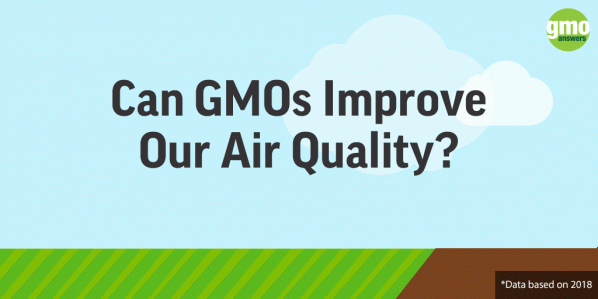Question
What happens to the land after years of growing GMO products.
Submitted by: erma
Answer
Expert response from Lawson Mozley
Sixth Generation Farmer, Master’s Student, Agronomy, University of Florida
Friday, 11/12/2015 12:48
There are two ways that I interpreted your question:
- My first interpretation was that you are asking what happens to the land ecologically, agronomically, biologically, etc.
- The second was what happens when a farmer decides to sell the land or use it for another purpose besides growing GMO crops.
Since both contexts are related, I’ll answer both and hope that I get to the real question that you intended.
First, growing GMOs has no negative impact on the land that a non-genetically engineered variety wouldn’t have. In fact, traits such as Bt or herbicide resistance actually allow us to use fewer (and often safer) chemicals and/or less tillage, which leaves more plant matter on top of the soil, which leads to increased organic matter in the soil. This is important because humus (organic matter) holds 400 times more water than clay does (which holds the most water of the inorganic soil components). Humus is also highly chemically reactive, which means that it can release nutrients or bind contaminants in the soil, improving the fertility and durability of a field to withstand adverse conditions such as drought or nutrient imbalances. Additionally, conservation tillage allows farmers to make fewer trips across a field, saving time, fossil fuels, and equipment wear. Other traits such as Bt or disease resistance can also aid in decreasing pest or disease pressure in the future without the need for applying another chemical to control the problem pest or disease.
Second, there is nothing restricting the use of land after it has been used to grow genetically engineered crops. A farmer can choose to grow a different crop, raise livestock, or sell the land for any purpose that it might have been used for otherwise. In fact, because of the benefits I mentioned related to conservation tillage, land that has been managed in this way is often even more valuable than it otherwise would be, due to the increased organic matter and decreased erosion issues. The only restriction that might apply is if a farmer wishes to gain USDA organic production status. This is a 4-year process, regardless of what was grown there before, and GMOs have no effect on it, but I mention it because it is a restriction that organic producers always face when they shift land from any other purpose besides organic agriculture into producing certified organic crops or livestock.
Answer
Expert response from Lawson Mozley
Sixth Generation Farmer, Master’s Student, Agronomy, University of Florida
Friday, 11/12/2015 12:48
There are two ways that I interpreted your question:
- My first interpretation was that you are asking what happens to the land ecologically, agronomically, biologically, etc.
- The second was what happens when a farmer decides to sell the land or use it for another purpose besides growing GMO crops.
Since both contexts are related, I’ll answer both and hope that I get to the real question that you intended.
First, growing GMOs has no negative impact on the land that a non-genetically engineered variety wouldn’t have. In fact, traits such as Bt or herbicide resistance actually allow us to use fewer (and often safer) chemicals and/or less tillage, which leaves more plant matter on top of the soil, which leads to increased organic matter in the soil. This is important because humus (organic matter) holds 400 times more water than clay does (which holds the most water of the inorganic soil components). Humus is also highly chemically reactive, which means that it can release nutrients or bind contaminants in the soil, improving the fertility and durability of a field to withstand adverse conditions such as drought or nutrient imbalances. Additionally, conservation tillage allows farmers to make fewer trips across a field, saving time, fossil fuels, and equipment wear. Other traits such as Bt or disease resistance can also aid in decreasing pest or disease pressure in the future without the need for applying another chemical to control the problem pest or disease.
Second, there is nothing restricting the use of land after it has been used to grow genetically engineered crops. A farmer can choose to grow a different crop, raise livestock, or sell the land for any purpose that it might have been used for otherwise. In fact, because of the benefits I mentioned related to conservation tillage, land that has been managed in this way is often even more valuable than it otherwise would be, due to the increased organic matter and decreased erosion issues. The only restriction that might apply is if a farmer wishes to gain USDA organic production status. This is a 4-year process, regardless of what was grown there before, and GMOs have no effect on it, but I mention it because it is a restriction that organic producers always face when they shift land from any other purpose besides organic agriculture into producing certified organic crops or livestock.
How Do GMOs Benefit The Environment?



